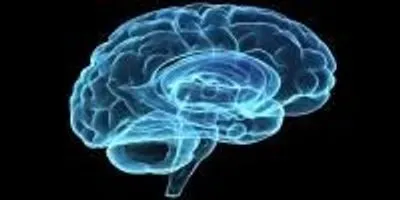 Hollis Cline.The Scripps Research InstituteLA JOLLA, CA – November 12, 2014 – Driving to work becomes routine—but could you drive the entire way in reverse gear? Humans, like many animals, are accustomed to seeing objects pass behind us as we go forward. Moving backwards feels unnatural.
Hollis Cline.The Scripps Research InstituteLA JOLLA, CA – November 12, 2014 – Driving to work becomes routine—but could you drive the entire way in reverse gear? Humans, like many animals, are accustomed to seeing objects pass behind us as we go forward. Moving backwards feels unnatural.
In a new study, scientists from The Scripps Research Institute (TSRI) reveal that moving forward actually trains the brain to perceive the world normally. The findings also show that the relationship between neurons in the eye and the brain is more complicated than previously thought—in fact, the order in which we see things could help the brain calibrate how we perceive time, as well as the objects around us.
“We were trying to understand how that happens and the rules used during brain development,” said the study’s senior author Hollis Cline, who is the Hahn Professor of Neuroscience and member of the Dorris Neuroscience Center at TSRI.
This research, published this week in the journal Proceedings of the National Academy of Sciences could have implications for treating sensory processing disorders such as autism.
Reversing the Map
The new study began when Masaki Hiramoto, a staff scientist in Cline’s lab, asked an important question: “How does the visual system of the brain get better “tuned” over time?”
Previous studies had shown that people use the visual system to create an internal map of the world. The key to creating this map is sensing the “optic flow” of objects as we walk or drive forward. “It’s natural because we’ve learned it,” said Cline.
To study how this system develops, Hiramoto and Cline used transparent tadpoles to watch as nerve fibers, called axons, developed between the retina and the brain. The scientists marked the positions of the axons using fluorescent proteins.
The tadpoles were split into groups and raised in small chambers. One group was shown a computer screen with bars of light that moved past the tadpoles from front to back—simulating a normal optic flow as if the animal were moving forward. A second group saw the bars in reverse—simulating an unnatural backwards motion. Using the TSRI Dorris Neuroscience Center microscopy facility, Hiramoto then captured high-resolution images of these neurons as they grew over time.
The researchers found that tadpoles’ visual map developed normally when shown bars moving from front to back. But tadpoles shown the bars in reverse order extended axons to the wrong spots in their map. With those axons out of order, the brain would perceive visual images as reversed or squished.
Rewriting the Rules
This discovery challenges a rule in neuroscience that dates back to 1949. Until now, researchers knew it was important that neighboring neurons fired at roughly the same time, but didn’t realize that the temporal sequence of firing was important.
“According to the old rule, if there was a stimulus that went backwards, the map would be fine,” said Cline.
The new study adds the element of order. The researchers showed that objects moving from front to back in the visual field activated retinal cells in a specific sequence.
Cline and Hiramoto believe that this sequence helps the brain perceive the passage of time. For example, if you drive for a few minutes and pass a street sign, your brain will map its position behind you. If you keep driving and you pass another street sign, your brain will map out not only the street signs’ positions relative to each other, but their distance in time as well.
This link between time and space in the visual system might also apply to hearing and the sense of touch. The original question of how the visual system gets “tuned” over time might be applicable across the entire brain.
The researchers believe this study could have implications for patients with sensory and temporal processing disorders, including autism and a mysterious disorder called Alice in Wonderland syndrome, where a person perceives objects as disproportionately big or small. Cline said the new study offers possibilities for retraining the brain to map the world correctly, for instance after stroke.
More information on the study, “Optic flow instructs retinotopic map formation through a spatial to temporal to spatial transformation of visual information,” is available at: http://www.pnas.org/content/early/2014/11/05/1416953111.abstract
Support for the work came from the National Institutes of Health (EY011261 and DP1OD000458), the Nancy Lurie Marks Family Foundation and an endowment from the Hahn Family Foundation.
LA JOLLA, CA – November 12, 2014 – Driving to work becomes routine—but could you drive the entire way in reverse gear? Humans, like many animals, are accustomed to seeing objects pass behind us as we go forward. Moving backwards feels unnatural.
In a new study, scientists from The Scripps Research Institute (TSRI) reveal that moving forward actually trains the brain to perceive the world normally. The findings also show that the relationship between neurons in the eye and the brain is more complicated than previously thought—in fact, the order in which we see things could help the brain calibrate how we perceive time, as well as the objects around us.
“We were trying to understand how that happens and the rules used during brain development,” said the study’s senior author Hollis Cline, who is the Hahn Professor of Neuroscience and member of the Dorris Neuroscience Center at TSRI.
To continue reading this article, sign up for FREE to

Membership is FREE and provides you with instant access to eNewsletters, digital publications, article archives, and more.












